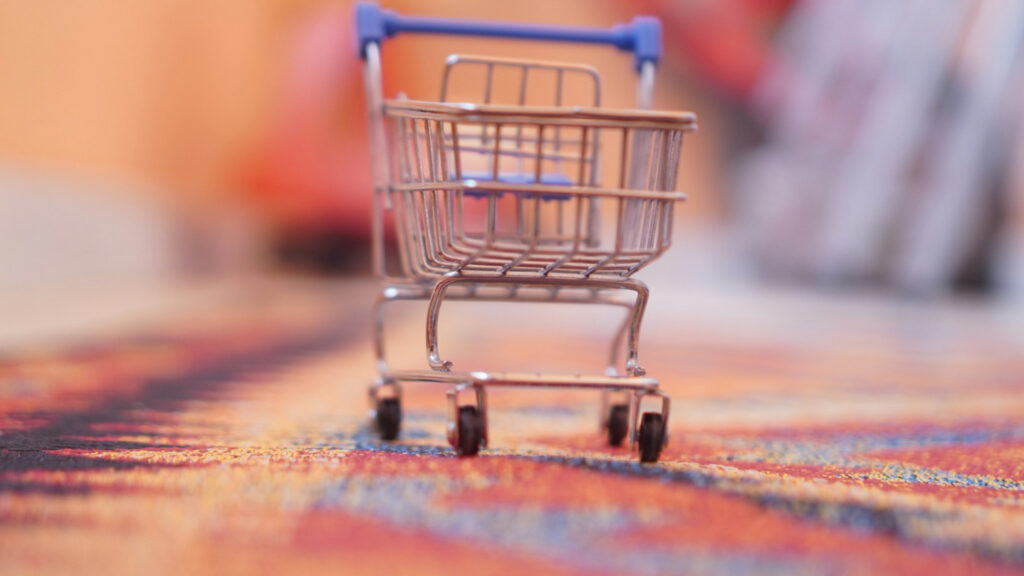
HOME / BLOG / STATISTICS
Online Shopping Statistics 2025: 99+ Stats & Insights [Expert Analysis]
- October 22, 2025
- Bill Nash
- 5:28 pm
In this article, we dig deep: we pull the most recent and compelling data around online shopping that you can apply today.
Table of Contents
Top-level global figures
There are ~2.77 billion global online shoppers (estimate for 2025).
Global retail e-commerce sales are forecast to be ~$6.8–$7.4 trillion in 2025 (different analysts vary).
Online retail purchases are projected to account for ~21–24% of total global retail sales in 2025.
The number of e-commerce stores worldwide is estimated at tens of millions (commonly cited >28M).
Global online retail revenue grew in the low-to-mid double digits year-on-year in recent years (varies by region).
Global digital buyers (those who buy online at least once a year) make up a majority of internet users in most developed markets.
Worldwide forecasts show steady e-commerce growth through the late 2020s (high-single to low-double-digit CAGR in many markets).
Online grocery and food delivery saw particularly fast growth during and after the pandemic and remain an elevated share of e-commerce in many countries.
Luxury goods online penetration continues to rise — online channels represent a growing share of luxury sales versus 2019.
Marketplaces (Amazon, Alibaba, MercadoLibre, Temu, etc.) account for a large share of global e-commerce transactions.
Mobile, device & channel trends
Mobile commerce is dominant — ~59% (major estimate) of total e-commerce sales come from mobile in 2025.
Smartphones account for the majority of online shopping sessions worldwide; desktops still typically show higher average order value.
In many markets, ~70–80% of internet users have used a smartphone to make at least one purchase.
Mobile apps generate a large share of mobile purchases; progressive web apps and optimized sites still drive important conversion gains.
Average order value (AOV) on desktop tends to be 20–60% higher than on mobile in many markets.
Social commerce (shopping via social platforms) continues fast growth — TikTok/Instagram driving significant referral traffic.
Shoppable video and livestream commerce grew in Asia first and are expanding globally.
Voice commerce is small today but growing — early adopters test smart-speaker purchases and voice search product discovery.
Buy-now-pay-later (BNPL) usage increased rapidly in 2021–2023 and remains a popular payment option for many demographics.
Mobile wallets and one-click checkouts are proven to raise conversion rates compared with multi-step forms.
App retention is challenging; many brands succeed at mobile by blending app offers with SMS/email retargeting.
Cross-device attribution matters: many buyers research on mobile and purchase on desktop or vice versa.
Cart, checkout & conversion
The average online shopping cart abandonment rate is ~70% (commonly cited for 2024/2025).
Top reasons shoppers abandon carts: unexpected extra costs (shipping/taxes/fees), too long checkout, lack of trust, required account creation.
Offering free shipping or free returns significantly reduces abandonment and increases conversion.
Guest checkout options generally improve conversion vs. forced account creation.
Multiple payment options raise conversion; the lack of preferred payment causes drop-off for some shoppers.
Cart recovery emails can recover a notable share of abandoned carts (benchmarks vary widely; often single-digit to low-double-digit recovery rates per campaign).
Site speed and checkout latency are directly correlated with conversion; faster checkouts convert better.
Persistent carts across devices (logged-in users) show higher recovery and conversion rates.
Adding clear shipping cost estimates earlier in the funnel reduces abandonment.
One-page and simplified checkout flows typically convert better than multi-step forms if usability is good.
Security signals (HTTPS, payment badges, reviews) build trust and lift conversion.
Offering local payment methods in cross-border sales increases conversion.
Cross-border / international commerce
The global cross-border e-commerce market was estimated at ~$1.14 trillion in 2024 (various forecasts differ).
Cross-border e-commerce is forecast to grow faster than domestic e-commerce through the late 2020s in many analyses.
Key barriers to cross-border purchases: shipping cost/time, customs/taxes, returns complexity, local payment preferences.
Many shoppers buy internationally to access lower prices, broader assortments, or brands not sold locally.
Localization (local currency, language, payment methods) boosts cross-border conversion substantially.
Logistics partners and duty-paid options reduce friction for buyers and increase cross-border repeat purchase.
Marketplaces often lead cross-border growth by simplifying checkout, fulfillment, and returns.
Regulatory changes (duties, data rules) can materially affect cross-border margins and processes.
Consumer behaviour & demographics
Younger generations (Gen Z and Millennials) shop online more frequently and adopt new channels fast (social, livestream).
Older shoppers (Gen X, Baby Boomers) increased online shopping adoption post-2020 and remain important value buyers.
Repeat purchasers account for a large share of revenue for many merchants (retention-focused brands see higher LTV).
Online review importance: ~99% of customers consult reviews before buying in many product categories (commonly cited).
Personalization (product recs, tailored emails) increases AOV and conversion when done correctly.
Sustainability concerns affect purchase decisions for a material share of shoppers in many markets.
Subscription commerce (replenishment, curated boxes) continues to be a strong retention tool.
A notable share of shoppers compare prices across multiple stores before buying — price transparency is high.
Free and fast returns are a major purchase enabler in apparel and footwear.
Loyalty programs that offer convenience and value (free shipping, early access) increase retention.
Email remains one of the highest ROI channels for retention and repeat purchases.
SMS marketing has high open rates and is commonly used for time-sensitive promos (but must be used judiciously).
Shoppers increasingly expect consistent omnichannel experiences (browsing, pickup, returns).
Visual search and image-based discovery adoption is growing, especially for fashion and home categories.
Many shoppers discover new products via social media feeds and influencer content.
Privacy concerns remain: a majority of consumers are uneasy about data usage and want transparency.
Marketplaces, platforms & merchant economics
Marketplaces capture a large and growing percentage of GMV in many countries (Amazon in US, Alibaba/TMall/Taobao in China, etc.).
Shopify, WooCommerce, Wix and other SaaS storefronts power millions of independent e-commerce sites.
Platform fees, fulfillment costs, and advertising spend are major expense lines that squeeze merchant margins.
Sponsored listings and marketplace ads are now a core acquisition channel for many merchants.
Direct-to-consumer (DTC) brands still rely heavily on paid acquisition (search/social) for growth.
Third-party logistics (3PL) and FBA-style programs are used to scale fulfillment capacity quickly.
Subscription and membership models (Prime, membership clubs) increase customer lifetime value.
Average gross margins vary widely by vertical — higher in beauty/luxury, lower in electronics/commodity goods.
Retail media (ads on retailer sites) is an increasingly important ad channel with strong intent signals.
Returns management and reverse logistics can materially impact net margins, especially in apparel.
Smaller merchants often scale profitably by focusing on niche audiences, repeat customers, and owned channels.
Inventory management sophistication (forecasting, reordering) improves working capital and availability.
Holiday & peak season behaviour
Holiday seasons (Black Friday/Cyber Monday, Singles Day, local shopping festivals) generate a high share of annual online sales for many merchants.
Mobile share spikes during last-minute holiday purchases; conversion patterns differ across devices during peaks.
Retailers who optimize site speed and inventory for sale days see significantly better conversion during peaks.
Gift categories and electronics typically dominate holiday online spend in many countries.
Returns after the holidays create a post-peak bump in reverse logistics work and costs.
Cross-border demand often spikes around global sale events due to promotions and currency benefits.
AI-driven personalization and search contributed to stronger holiday performance in recent years.
Retailers that offer clear delivery estimates and extended return windows perform better during holidays.
Paid search and social CPCs often rise sharply during peak shopping events.
Technology, AI & personalization
AI and machine learning are widely used for product recommendations, search ranking, fraud detection, and dynamic pricing.
Conversational commerce (chatbots/assistants) helps with product discovery and post-purchase support.
AI-influenced shopping has been shown to increase sales volumes during holiday periods.
Visual commerce tools (AR try-ons, 3D product views) reduce returns and improve buyer confidence for some categories.
Advanced fraud detection and identity verification are essential as online fraud attempts evolve.
CDPs (customer data platforms) and unified analytics stacks are more widely adopted to support personalization.
Predictive fulfillment (pre-staging inventory near demand) is used by large retailers to speed delivery.
Dynamic pricing is increasingly used for promotions, inventory management, and competitiveness.
Privacy-first personalization (on-device, aggregated cohorts) is rising with regulatory pressure.
Logistics, shipping & returns
Fast and predictable shipping remains a top purchase driver; many consumers will pay for faster delivery.
Free shipping thresholds are a common tactic to increase AOV.
Returns rates vary by category — apparel/footwear often see the highest return percentages (double-digit percent of orders).
Returns are one of the largest cost levers for fashion retailers; lower returns often come from better fit/visual tools.
Same-day and next-day delivery options are expanding in urban areas and raise conversion for time-sensitive buyers.
Fulfillment centers and localized inventory reduce transit times and improve customer experience.
Last-mile logistics innovations (locker pickup, local micro-fulfillment) help control costs and speed.
Sustainable packaging and carbon-neutral shipping options are increasingly offered by brands to appeal to eco-conscious buyers.
Business outcomes, metrics & KPIs
Customer acquisition cost (CAC) tends to be a top lever; rising paid-media costs increase the importance of retention and LTV.
Retention-focused strategies (loyalty, subscriptions, email/SMS flows) materially increase LTV and profitabilty.
Average order values (AOV) and conversion rates vary widely by category — tracking cohort AOVs is essential for accurate LTV modeling.
Merchants that invest in site speed, UX on mobile, flexible payments, and straightforward returns generally see stronger growth and margins.
Ready to Grow Your Business?
At Marketing LTB, we specialize in helping businesses like yours thrive online. From strategic digital marketing and branding to web development and social media management, we offer the tools and expertise to elevate your brand and drive real results.
Let’s build something amazing together, get in touch with us today!

About Marketing LTB
Marketing LTB is a full-service marketing agency offering over 50 specialized services across 100+ industries. Our seasoned team leverages data-driven strategies and a full-funnel approach to maximize your ROI and fuel business growth. Discover how our expertise can drive revenue for your business>

About the author, Bill Nash
Bill Nash is the CMO of Marketing LTB with over a decade of experience, he has driven growth for Fortune 500 companies and startups through data-driven campaigns and advanced marketing technologies. He has written over 400 pieces of content about marketing, covering topics like marketing tips, guides, AI in advertising, advanced PPC strategies, conversion optimization, and others.
